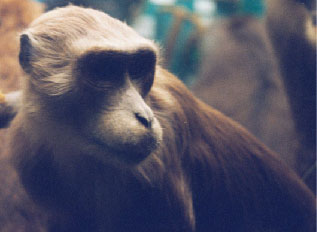This species has cheek pouches to carry food in while it forages. The average body mass for an adult male moor macaque is between 9 and 10 kilograms, and for the female it is around 5 kilograms. This species has a relatively short tail.
RANGE:
The moor macaque is found on the islands of Sulawesi which is part of the country of Indonesia. This species is found in rainforests in its Northern limits and deciduous forests, grasslands, and scrublands in its Southern limits.
